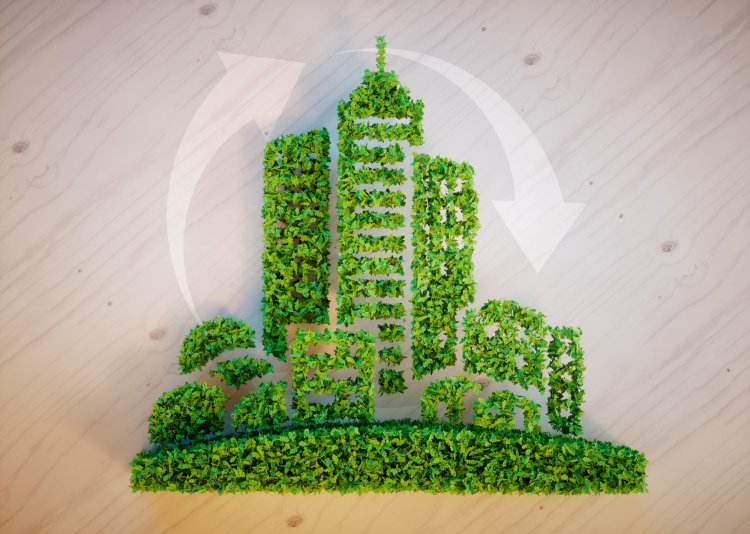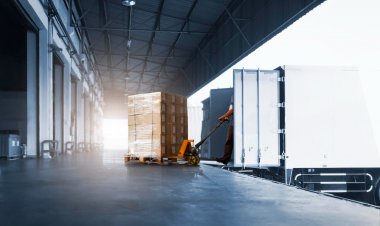Global Construction Sustainable Materials Market Size to Reach $595 Billion at a CAGR of 10.6% by 2030
Vantage Market Research expects the Construction Sustainable Materials Market to reach USD 595 Billion by 2030, exhibiting a growth rate (CAGR) of 10.6% during 2023-2030.

The Global Construction Sustainable Materials Market size reached USD 293 Billion in 2022. Vantage Market Research expects the market to reach USD 595 Billion by 2030, exhibiting a growth rate (CAGR) of 10.6% during 2023-2030.
The Shift Towards Construction Sustainable Materials
The sustainable construction materials market has gained popularity in the last few years and is now a mainstream practice across the globe. The concerns over climate change and an increase in awareness about sustainability have led to a shift towards eco-friendly and sustainable construction materials. These materials not only reduce the carbon footprint of a building but also enhance its resilience and durability over time. In the future, the use of sustainable materials in construction is expected to become more widespread worldwide. As societies become increasingly aware of the environmental impacts of traditional construction materials and methods, there is growing interest in finding alternatives that are less harmful to the planet.
Request Sample Report of Construction Sustainable Materials Market @ https://www.vantagemarketresearch.com/construction-sustainable-materials-market-2198/request-sample
Top Companies in Global Construction Sustainable Materials Market
- BASF SE (Germany)
- Bauder Ltd. (UK)
- DuPont (U.S.)
- Forbo International SA (Switzerland)
- Interface Inc. (U.S.)
- Kingspan (Ireland)
- LafargeHolcim (Switzerland)
- PPG Industries Inc. (U.S.)
The Current State of the Construction Sustainable Materials Market
According to the UN Environment Program's (UNEP) 2022 worldwide Status Report for the Sector of Buildings and Construction, the building and construction sector was responsible for around of energy- and process-related CO2 emissions and more than 34% of worldwide energy consumption. These alarming statistics demonstrate how important it is to choose ecologically friendly building materials in order to reduce the negative environmental effects of buildings. The adoption of sustainable materials for building construction and architectural design is becoming more of a priority for the construction industry globally.
The sustainable construction materials market is expanding due to the increase in the adoption of sustainable construction practices across the globe, the rise in green building standards, and a surge in government initiatives to promote sustainable construction. Moreover, there is a growing trend towards green certification in buildings, which has further propelled the demand for sustainable construction materials. Green certifications such as LEED, BREEAM, and WELL, among others, have become standard practices in ensuring sustainability in buildings. Furthermore, the increasing demand from end-users, such as residential, commercial, and industrial infrastructure, has also driven the market growth.
Buy Now Our Construction Sustainable Materials Industry Report @ https://www.vantagemarketresearch.com/buy-now/construction-sustainable-materials-market-2198/0
Potential Growth Opportunities
The sustainable construction materials market is expected to witness significant growth in the coming years. There are several reasons for this growth, some of which are listed below:
- Governments across the globe are taking initiatives to promote sustainable construction practices and reduce the carbon footprint of buildings. For instance, in 2019, the UK government announced that all new house must be built with low-carbon heating and high energy efficiency standards. Similarly, in the US, the federal government offers tax incentives to builders who use sustainable construction materials.
- With the increasing population, there is a rise in demand for new residential and commercial buildings, which has created a need for sustainable construction practices. Sustainable construction materials not only reduce the carbon footprint of a building but also enhance its durability, providing a long-term solution to the rising demand for new buildings.
- Green certifications: Green certifications have become the norm in ensuring sustainability in buildings. These certifications have a positive impact on the environment, health, and productivity of individuals. With the growing awareness about these certifications, there is a surge in the demand for sustainable construction materials.
Conclusion
The sustainable construction materials market is rapidly growing and is expected to continue its growth in the coming years. Various factors, such as government initiatives, an increase in population, and green certifications, have contributed to the growth of this market. Moreover, several key players operate in this market, offering a wide variety of sustainable construction materials. The adoption of sustainable construction materials not only provides a long-term solution to the rising demand for new buildings but also contributes to reducing the carbon footprint of a building.
Read Our Latest Press Release: Human Identification Market - In-depth Analysis
Contact us
Eric Kunz
6218 Georgia Avenue NW Ste 1 - 564
Washington DC 20011-5125
United States Tel: +1 202 380 9727
Email: [email protected]
Website: Vantage Market Research


















